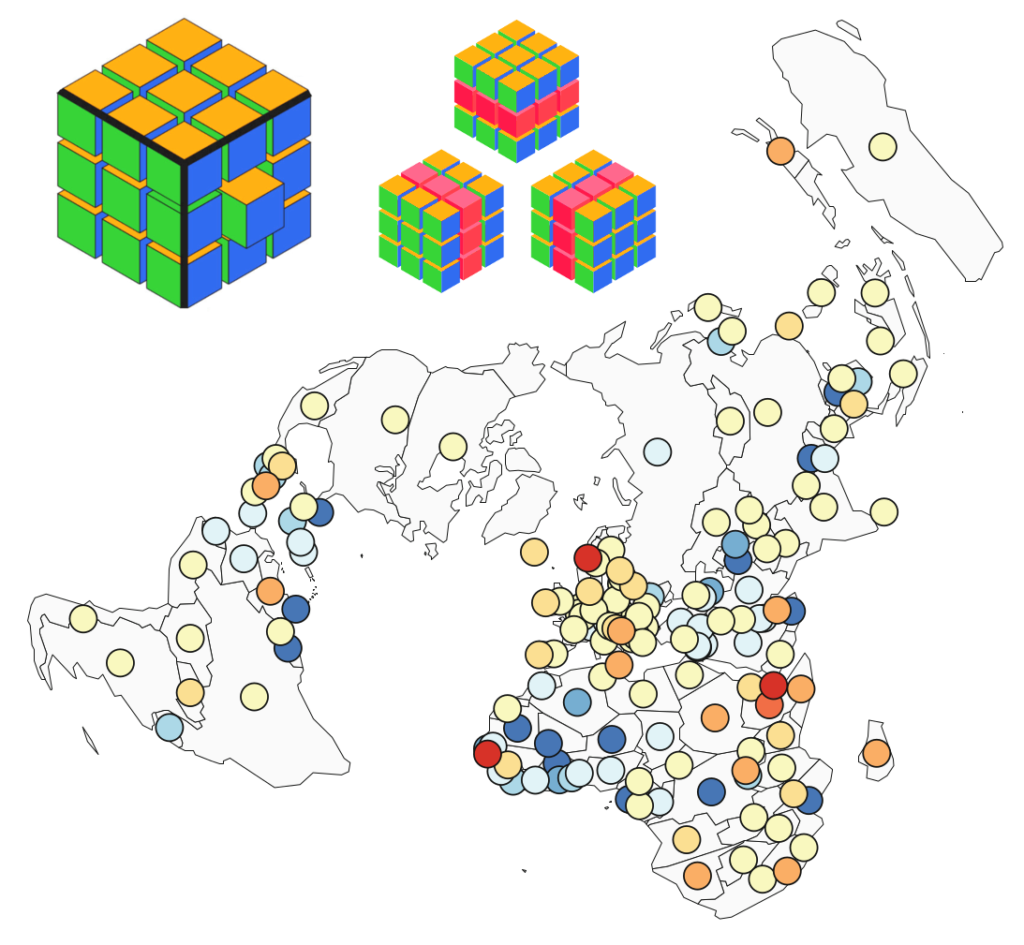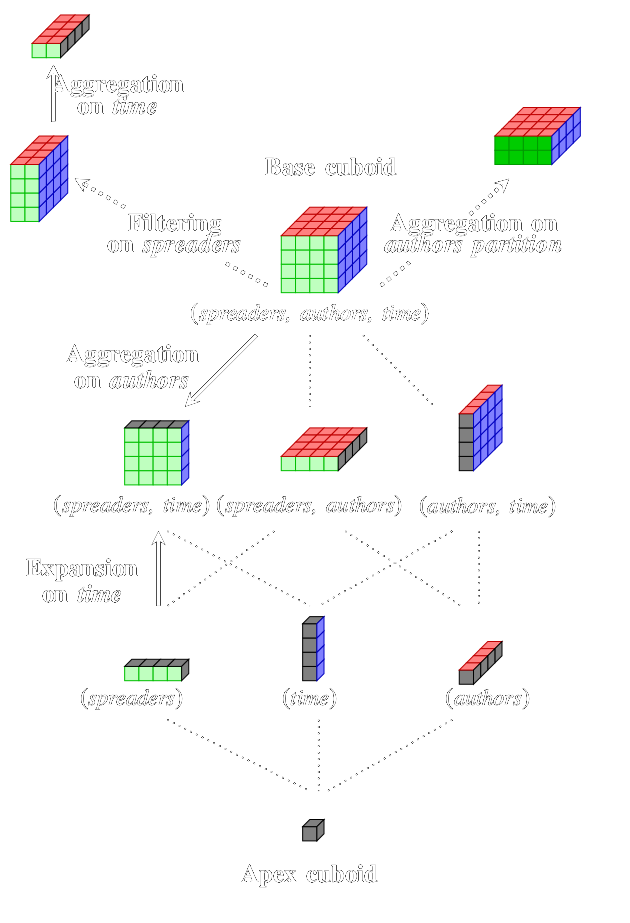Géographie et médias
L’agenda géomédiatique international : analyse multidimensionnelle des flux d’actualité
Claude Grasland, Robin Lamarche-Perrin, Benjamin Loveluck, and Hugues Pecout. In L’Espace Géographique, vol. 45, issue 2016/1, p. 25-43. Éditions Belin, Paris, 2016.
Notre image du monde dépend dans une large mesure des flux d’information que nous recevons de l’étranger via les médias de masse. Nous proposons dans cet article un cadre d’analyse quantitative des flux médiatiques – marqueurs possibles des dynamiques contemporaines de mondialisation et de régionalisation – reposant sur le concept d’« agenda géomédiatique ».

Building Optimal Macroscopic Representations of Complex Multi-agent Systems. Application to the Spatial and Temporal Analysis of International Relations through News Aggregation
Robin Lamarche-Perrin, Yves Demazeau and Jean-Marc Vincent. In N.T. Nguyen, Ryszard Kowalczyk, Juan M. Corchado, and Javier Bajo (eds.), Transactions on Computational Collective Intelligence, vol. XV, LNCS 8670, p. 1-27. Springer-Verlag Berlin, Heidelberg, 2014.
Identification of International Media Events by Spatial and Temporal Aggregation of RSS Flows of Newspapers. Application to the Case of the Syrian Civil War between May 2011 and December 2012
Timothée Giraud, Claude Grasland, Robin Lamarche-Perrin, Yves Demazeau and Jean-Marc Vincent. In Proceedings of the 18th European Colloquium on Theoretical and Quantitative Geography (ECTQG’13), p. 112-114. 2013.
The design and the debugging of large-scale MAS require abstraction tools in order to work at a macroscopic level of description. Agent aggregation provides such abstractions by reducing the complexity of the system’s microscopic representation. Since it leads to an information loss, such a key process may be extremely harmful for the analysis if poorly executed.
The research project GEOMEDIA (ANR Corpus, 2013-2015) elaborates an international observatory of mediatized events, based on the collection of RSS flows feeded by 100 newspapers in French and English languages. The aim of this presentation is (1) to describe the complexity of the information contained in RSS flows according to space, time and media dimensions.
Sociologie et réseaux
Multidimensional Outlier Detection in Temporal Interaction Networks: An Application to Political Communication on Twitter
Audrey Wilmet and Robin Lamarche-Perrin. ArXiv, 2019.
In social network Twitter, users can interact with each other and spread information via retweets. These millions of interactions may result in media events whose influence goes beyond Twitter framework. In this paper, we thoroughly explore interactions to provide a better understanding of the emergence of certain trends. First, we consider an interaction on Twitter to be a triplet (s,a,t) meaning that user s, called the spreader, has retweeted a tweet of user a, called the author, at time t. We model this set of interactions as a data cube with three dimensions: spreaders, authors and time.

Mining Political Opinion on Twitter: Challenges and Opportunities of Multiscale Approaches
Marta Severo and Robin Lamarche-Perrin. In Gilles Bastin and Paola Tubaro (eds.), Revue française de sociologie: “Big Data, Sociétés et Sciences Sociales”. Presses de Sciences Po, Paris, 2018.
Link weights recovery in heterogeneous information networks
Hông-Lan Botterman and Robin Lamarche-Perrin. ArXiv, 2019.
Social research on public opinion has been affected by the recent deluge of new digital data on the Web, from blogs and forums to Facebook pages and Twitter accounts. This fresh type of information useful for mining opinions is emerging as an alternative to traditional techniques, such as opinion polls. Firstly, by building the state of the art of studies of political opinion based on Twitter data, this paper aims at identifying the relationship between the chosen data analysis method and the definition of political opinion implied in these studies.
Socio-technical systems usually consists of many intertwined networks, each connecting different types of objects (or actors) through a variety of means. As these networks are co-dependent, one can take advantage of this entangled structure to study interaction patterns in a particular network from the information provided by other related networks. A method is hence proposed and tested to recover the weights of missing or unobserved links in heterogeneous information networks (HIN) – abstract representations of systems composed of multiple types of entities and their relations.